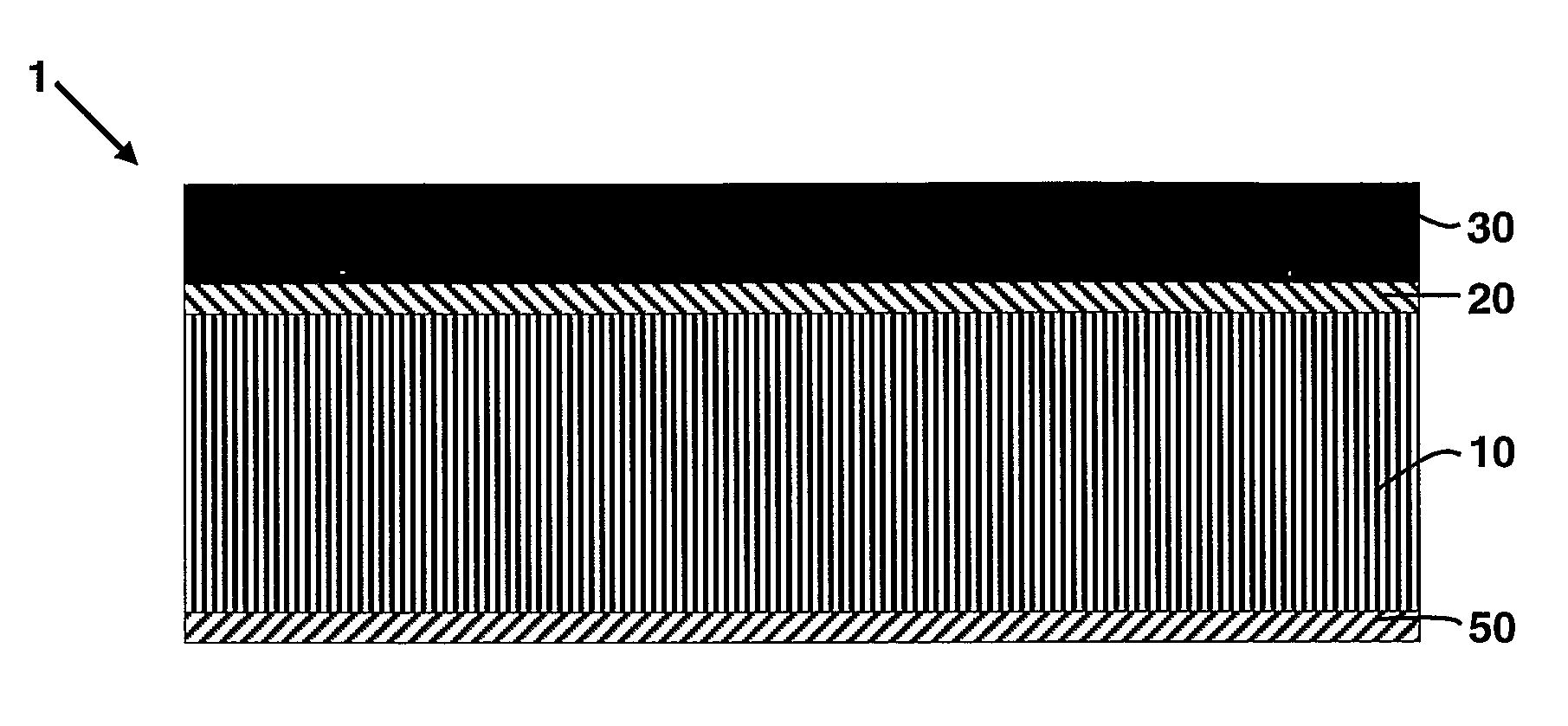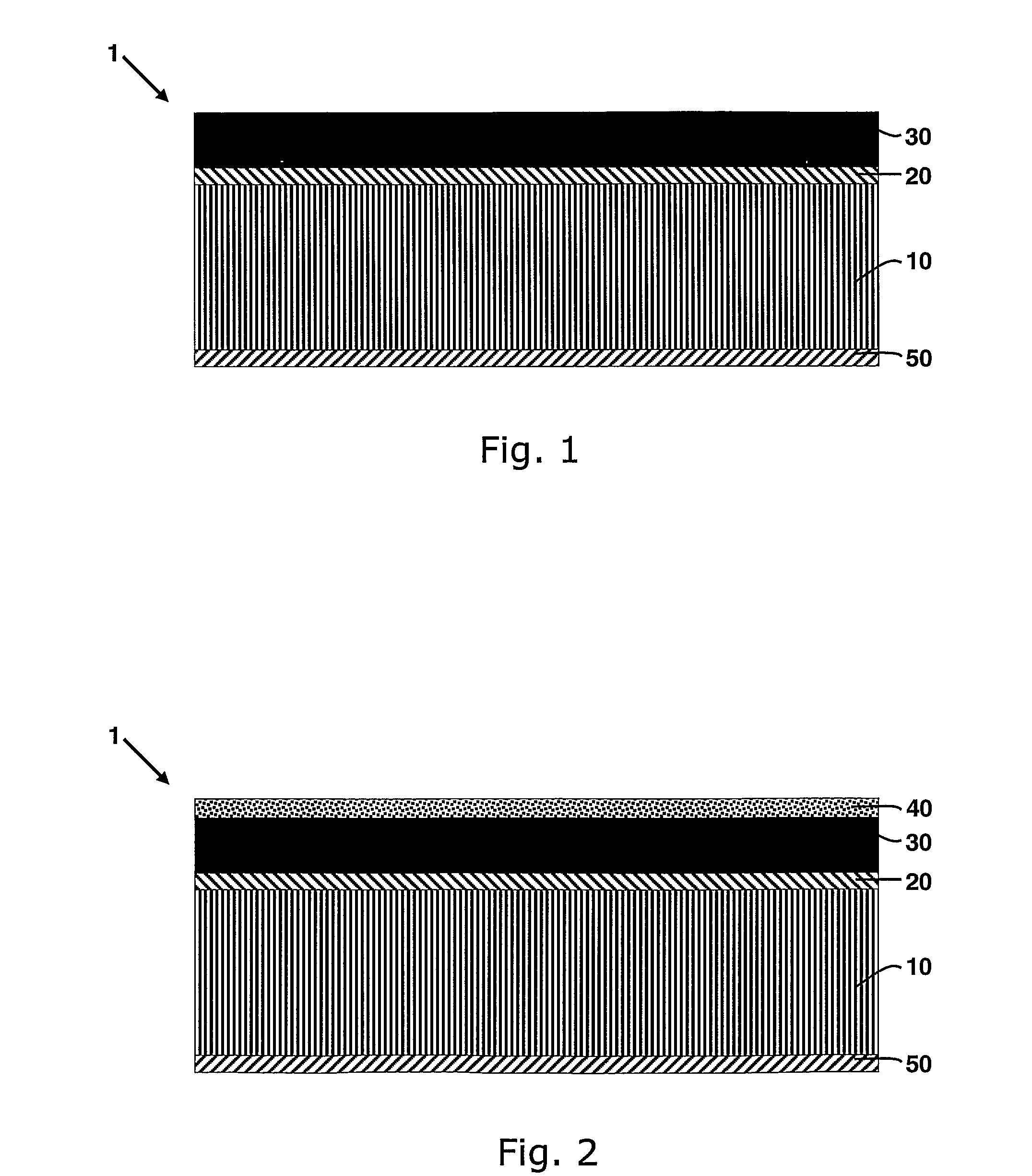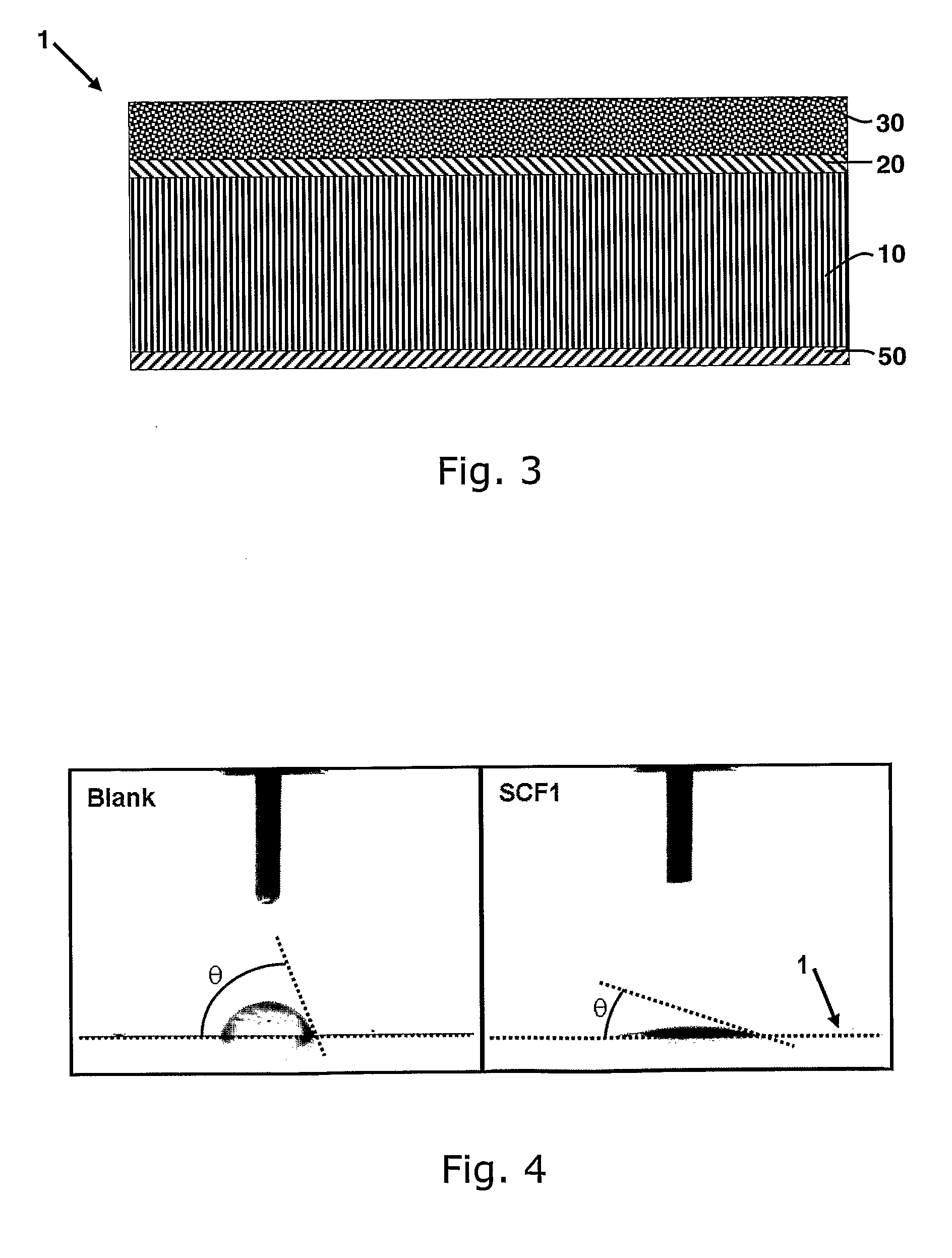Photocatalytic boards or panels and a method of manufacturing thereof
a technology of photocatalysis and photocatalysis boards, which is applied in the field of photocatalytic boards or panels and a manufacturing method thereof, can solve the problems of difficult washing of difficult to clean the melamine surface of the laminate floor, and the difficulty of cleaning the laminate floor, so as to improve the washing
- Summary
- Abstract
- Description
- Claims
- Application Information
AI Technical Summary
Benefits of technology
Problems solved by technology
Method used
Image
Examples
example 1
Applying a Photocatalytic Top Layer—Preconditioning
[0107]“Pergo Original Beech PO 22201” laminate floor boards, recommended for heavy domestic use, were used as model laminate boards for applying top coatings in examples 1a-d. The laminate boards were cleaned by wiping the boards with isopropanol using a microfiber cloth. One end of the boards, half of the laminate board, was preconditioned which is important to get the best uniform and most durable photocatalytic top layer. The preconditioning fluid composition was a 3 wt % CeO2 dispersion in water with a primary particle size of the ceria nanoparticles of 12 nm determined as the equivalent spherical diameter from BET measurements. The cleaning fluid composition had a pH of 5.1 and the median particle size in dispersion was 160 nm determined by Malvern's ZetasizerNano. A trigger spray bottle containing the cleaning fluid was shaken and the cleaning fluid composition sprayed over the laminate surface (15 ml / m2). A microfiber wipe wa...
example 1a
Applying a Photocatalytic Top Layer: Top Layers SCF1 and SCF2
[0108]The top layer fluid used was a stable nanoparticle dispersion based on a 1 wt % dispersion of TiO2 (anatase) in water. The average primary particle size was 8 nm (expressed as an equivalent spherical diameter and measured by X-ray Diffraction using Scherer's formula) and the median particle size in dispersion was 18 nm as determined by Malvern's ZetasizerNano. The top layer fluid was applied to the preconditioned surface of two laminate boards (SCF1 and SCF2) using a trigger spray bottle, in 15 mL / m2 and 30 mL / m2 amounts, respectively. A microfiber wipe was used to distribute the top layer fluid across the preconditioned half of the laminate surface, moving in circular movements. The laminate boards were left to dry under ambient conditions for 15 min whereupon they were further dried and cured exposed to UV-visible light (Osram ULTRA-VITALUX sun lamp, 300 W 230V E27 FS1) for 12 h. The contact angle with water was me...
example 1b
Applying a Photocatalytic Top Layer: Top Layer SCF3
[0109]The top layer fluid used was a stable nanoparticle dispersion based on a 1 wt % dispersion of silver doped TiO2 (anatase) in water. The average primary particle size was 8 nm (expressed as an equivalent spherical diameter and measured by X-ray Diffraction using Scherer's formula) and the median particle size in dispersion was 19 nm as determined by Malvern's ZetasizerNano. The top layer fluid was applied (15 mL / m2) to the preconditioned surface of a laminate board SCF3 using a trigger spray bottle. A microfiber wipe was used to distribute the top layer fluid across the preconditioned half of the laminate surface, moving in circular movements. The laminate board was left to dry under ambient conditions for 15 min whereupon it was further dried and cured exposed to UV-visible light (Osram ULTRA-VITALUX sun lamp, 300 W 230V E27 FS1) for 12 h. The contact angle with water was measured for both the blank (non-coated) and the coated...
PUM
| Property | Measurement | Unit |
|---|---|---|
| particle size | aaaaa | aaaaa |
| aggregate size | aaaaa | aaaaa |
| aggregate size | aaaaa | aaaaa |
Abstract
Description
Claims
Application Information
 Login to View More
Login to View More - R&D
- Intellectual Property
- Life Sciences
- Materials
- Tech Scout
- Unparalleled Data Quality
- Higher Quality Content
- 60% Fewer Hallucinations
Browse by: Latest US Patents, China's latest patents, Technical Efficacy Thesaurus, Application Domain, Technology Topic, Popular Technical Reports.
© 2025 PatSnap. All rights reserved.Legal|Privacy policy|Modern Slavery Act Transparency Statement|Sitemap|About US| Contact US: help@patsnap.com



